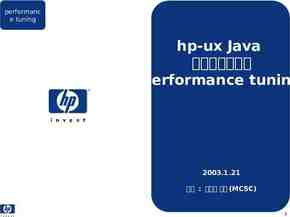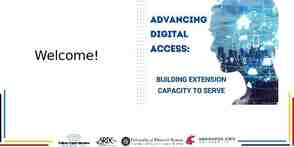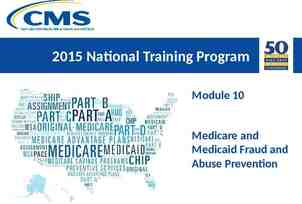Presenter Disclosures: Alexandra Lowell, Courtney Kappes,
35 Slides3.03 MB
Presenter Disclosures: Alexandra Lowell, Courtney Kappes, Janelle McLeod, Maureen Hinman & Michael Anderson-Nathe (1) The following personal financial relationships with commercial interests relevant to this presentation existed during the past 12 months: No relationships to disclose
Oregon’s Alternative Payment Model Frontier: A School-Based Health Center Innovation Project Alexandra Lowell Courtney Kappes Janelle McLeod Maureen Hinman Michael Anderson-Nathe
Agenda: Healthcare Transformation and Oregon’s Coordinated Care Organizations Alternative Payment Models (APMs) SBHC Alternative Payment Innovation Project (APIP) Questions and Activities throughout the presentation Objectives: Describe different types of APMs Identify strategies to evaluate your own program’s APM readiness Identify talking points and strategies for communicating with ACOs Describe the process and lessons learned from the SBHC APIP work
Health Transformation in Oregon
We Can’t Afford This Anymore Since 1930, if Food Had Risen at the Same Rate as Medical Inflation: 1 Dozen Eggs 80.20 (1) 1 Dozen Oranges 107.90 1 Pound Bananas 16.04 1 Pound Coffee(1) 64.17 Not Starbucks
Source: Oregon Health Authority – Health Transformation webinar, 2014
What is a CCO A network of all types of health care providers who have agreed to work together in their local communities for Oregon Health Plan Members (Medicaid); With one budget that grows at a fixed rate for mental, physical and dental care; Accountable for health outcomes of the population they serve; Governed by a partnership of health care providers, community members, and stakeholders who have financial responsibility and are invested in the results.
Me hR ealt tal H Den Kaiser Providenc e ea l th R is k Tuality Clackama Clackama s s County County isk Dental Dental Health Health Plans Plans nta lH ealth Risk Access Dental Advantag e Dental Capitol Dental CareOreg on Kaiser Dental Managed Dental ODS Dental Willamett e Dental Family Dental Multnoma Multnoma h h County County Washingto Washingto n n County County Other Other Participating Participating Orgs: Orgs: OHSU, OHSU, Legacy, Legacy, Adventist, Adventist, Central Central City City Concern Concern Physical H Mental Mental Health Health Plans Plans on Physical Physical Health Health Plans Plans Service area: Clackamas, Washington & Multnomah Counties Total Enrollment: 237,000 as of 2/2015 CareOreg
Why Alternative Payment Models (APMs)?
Key APMs: Primary Care Capitation Pay For Performance Incentives Fee For Specialized Service Braided & Grant Funding
Primary Care Capitation Monthly payment received by the health system for each of their members that provides flexibility to deliver care and services in a more cost-effective and patient-centered way.
Pay For Performance Incentives Incentive payments based on achieving certain metrics or outcomes
Fee For Specialized Service Execute contractual agreements for specific preventive services to be paid for traditionally unfunded services Explore Opportunities to Expand FQHC Scope of Service to include SBHC services
Braided & Grant Funding
Questions for the audience: What are some of your experiences with alternative payment models? Are there any other models that we have not discussed?
Current Oregon APMs CareOregon Pay 4 Performance Incentives Multnomah County Health Dept & Kaiser PM Contract Oregon Health Authority FQHC APM
Oregon Health Authority FQHC APM Initiated by the Oregon Primary Care Association in partnership with member FQHCs and the Oregon Health Authority Health centers are given an attributed list of clients that they are responsible for improving health outcomes for Receive a Per-Member-Per-Month payment upfront for each attributed client
Oregon Health Authority FQHC APM How are FQHCs held Clinical Outcomes accountable? Exercise class Telephone Encounters My Chart Encounters Telemedicine Encounter Care Coordination Accessing Community Resources Case Management participation Panel Management Outreach Supportive Counseling Group Education Warm hand off Home visit (non-billable) Transportation Assistance
2013 SBHC HB 2445: Established Legislation SBHCs in statute; appropriated funds for SBHC expansion and to incentivize participation in health reform SB 436: Encouraged
SBHC Alternative Payment Innovation Project (APIP) Goals: Improve the effectiveness of the delivery of health services through SBHCs for children who qualify for medical assistance Improve the coordination of the care of patients services by CCOs and SBHCs
SBHC APIP Workgroup
Activity: Using the sheet provided: Identify the key stakeholders you would need to engage when developing an Alternative Payment Model Make note of any barriers to their participation and possible solutions
SBHC APIP Key Questions: What What is is the the problem problem trying trying to to be be fixed? fixed? What What is is the the value of SBHCs? How How would would an APM an APM fix fix the the problem? problem? Who Who is is responsible responsible to to pay pay for for what? what?
What is the problem trying to be fixed? What What is is the the problem problem trying trying to to be be fixed? fixed? What is the value of SBHCs? How would an APM fix the problem? Who is responsible to pay for what?
What is the value of SBHCs? Need a defined value statement that is linked to the problem that needs to be fixed Have to be able to show the value of the SBHC to the payor What is the problem trying to be fixed? What What is is the the value of value of SBHCs? SBHCs? How would an APM fix the problem? Who is responsible to pay for what?
Activity: For your SBHC program: Identify all the non-reimbursable services your program provides Note if they are measured or not, and if so how they are measured Define the value of your SBHC program In small groups discuss some of the struggles with communicating about SBHC value and the services provided in the new healthcare landscape
How does an APM fix the problem? Need to understand SBHC utilization within the larger context of SBHC clients who have Medicaid What is the problem trying to be fixed? What is the value of SBHCs? How How would would an APM an APM fix fix the the problem? problem? Who is responsible to pay for what?
SBHC APIP Utilization Analysis Level of Users: Low: 1-2 visits Medium: 3-5 visits Medium-High: 6-9 visits High: 10 visits ?
Utilization Data Cont’d
Who is responsible to pay for what?
Who’s responsible to pay for what?
Next steps moving forward: What is the problem What is the value of SBHCS How does an APM fix the problem Who is responsi ble to pay for what ? ? ? ? ? ? ? ? ? ? ? ? ?
Thank you for your time and attention Any questions?
Contact Information: Alexandra Lowell: [email protected] Courtney Kappes: [email protected] Janelle McLeod: [email protected] Maureen Hinman: [email protected] Michael Anderson-Nathe: [email protected] http://osbha.org/ourwork/alternative-payment-innovation-project All APIP materials, including meeting documentation info-graphics and this








































